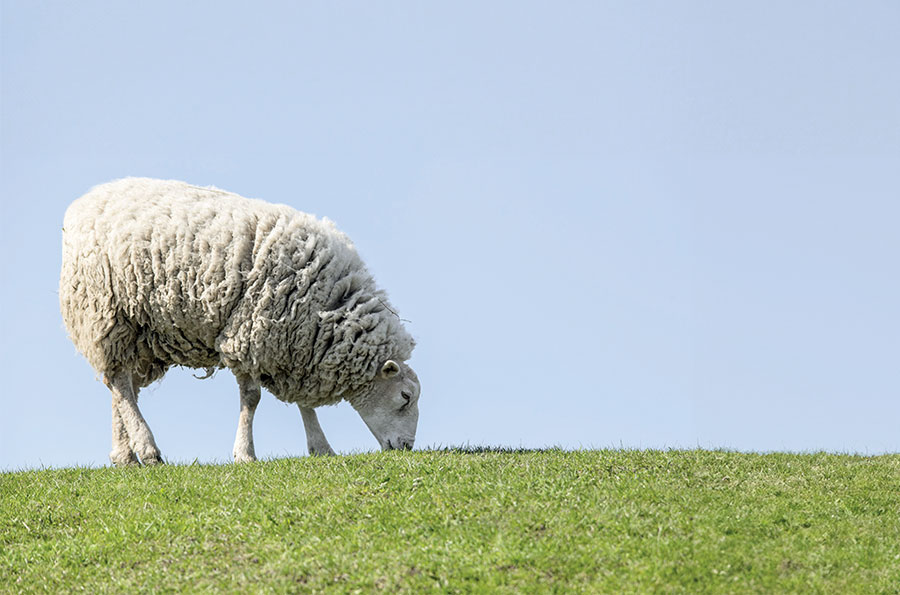Will there be a vaccine for BTV-3?
30th May 2024
In a recent AHDB Food & Farming podcast, experts gathered to discuss the likelihood of a vaccine for the latest strain of bluetongue virus, which began to appear on farms in Kent and Norfolk last year. Sarah Kidby reports.

Since BTV-3 was first seen in the UK in November last year, at the time of writing there had been over 120 confirmed cases in England. We are now out of the seasonally low vector period as biting midge activity has increased with the warmer weather. A potential rise in bluetongue cases is expected as a result. BTV can spread when average temperatures are at least 12–15°C.
How soon can we expect a vaccine?
Current vaccines for BTV serotypes 1, 4 and 8 do not offer cross protection for BTV-3, prompting experts to discuss the possibility of a future vaccine. Professor Andy Peters, a veterinary vaccine consultant, said we can expect to wait a good year, and it’s not a “slam dunk”.
Whilst we already have vaccines to cover the previous strains, updating them to incorporate a new strain is not as simple as it sounds. “You have to start again by inserting that particular strain into the vaccine. You can add to what’s already there by producing a multivalent vaccine to protect against a number of strains at the same time, but you have to start by including that new virus,” he explained.
In terms of the regulatory hoops to jump through, there are three components: quality, safety and efficacy. Quality involves identifying the main components of the vaccine and ensuring they’re pure and the vaccine preparation process was consistent – especially between batches. The vaccine must be safe for the animal, anyone handling it, the consumer of the animal product, and the environment. Any finally, efficacy – does it protect against BTV-3 and to what degree?
The government recently said it is working hard to facilitate safe access to a BTV-3 vaccine as soon as possible – and set out its plan to tackle a potential bluetongue outbreak.
During the podcast, Prof Peters said it could be possible to acquire an emergency or conditional licence for a vaccine to expedite the process, but it would still take at least a year for a vaccine to be deployed.
It’s hard to say whether pharmaceutical companies are looking into developing a vaccine – as Prof Peters points out, it’s a confidential and competitive process. Additionally, whilst a BTV-3 vaccine may be an unmet need for farmers, vaccines require a big financial investment for pharmaceutical companies. If BTV-3 settles down over the next season or two, the market for the vaccine will be gone, so it’s not guaranteed that a vaccine will be developed.
Responding to a question on the potential cost of the vaccine for farmers, it’s impossible to say at this stage, and will depend on how much it costs to make a unit dose.
Since the podcast, two vaccines have been developed and emergency authorisations granted in The Netherlands and Belgium.
Safety and efficacy
Asked if a BTV-3 vaccine in South Africa could be deployed in the UK, Dr Carrie Batten from The Pirbright Institute replied strongly: “Absolutely not”, citing safety and efficacy concerns. It’s a live attenuated vaccine – comprised of a weaker version of the virus – and protects against four other BTV strains in addition to BTV-3, which would be introduced to the UK if the vaccine was used here. Segmented RNA vaccines are also able to recombine, potentially resulting in an even worse virus than BTV-3.
An inactive vaccine, similar to those for BTV-1, 4 and 8, using technology that’s been used before would be the best option, speakers said.
Keep vigilant
AHDB’s head of animal health and welfare, Dr Mandy Nevel, advised farmers to remain vigilant and have a contingency plan for suspected BTV-3 on your farm – make sure you have all the phone numbers you need to hand. Be aware of the signs of BTV and carry out regular inspections of your animals.
Another key issue is that Schmallenberg virus has been a problem this year, with lambs and calves being born deformed – which is also a sign of BTV. Dr Nevel urged farmers not to assume it’s Schmallenberg and make use of free testing in England from the APHA.
BTV-3 clinical signs:
Sheep:
- Ulcers or sores in the mouth and nose
- Discharge from the eyes or nose and drooling from mouth
- Swelling of the lips, tongue, head and neck and the coronary band (where the skin of the leg meets the horn of the foot)
- Red skin as a result of blood collecting beneath the surface
- Fever
- Lameness
- Breathing problems
- Abortion, foetal deformities and stillbirths
- Death.
Cattle are less likely to show clinical signs but when they appear, they can include:
- Lethargy
- Crusty erosions around the nostrils and muzzle
- Redness of the mouth, eyes, nose
- Reddening of the skin above the hoof
- Nasal discharge
- Reddening and erosions on the teats
- Fever
- Milk drop
- Not eating
- Abortion, foetal deformities and stillbirths.
Read more livestock news.
